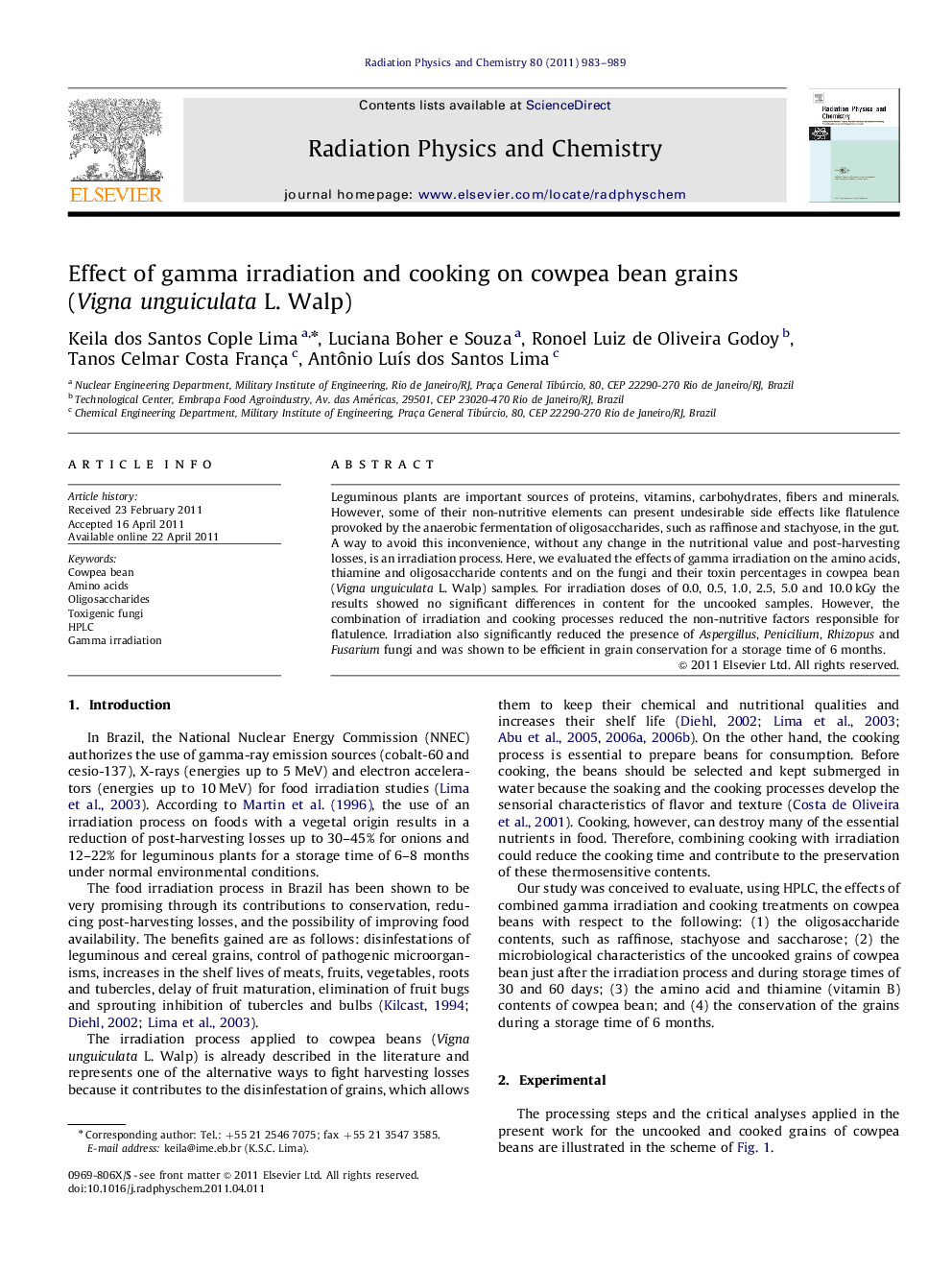| Article ID | Journal | Published Year | Pages | File Type |
|---|---|---|---|---|
| 1884298 | Radiation Physics and Chemistry | 2011 | 7 Pages |
Leguminous plants are important sources of proteins, vitamins, carbohydrates, fibers and minerals. However, some of their non-nutritive elements can present undesirable side effects like flatulence provoked by the anaerobic fermentation of oligosaccharides, such as raffinose and stachyose, in the gut. A way to avoid this inconvenience, without any change in the nutritional value and post-harvesting losses, is an irradiation process. Here, we evaluated the effects of gamma irradiation on the amino acids, thiamine and oligosaccharide contents and on the fungi and their toxin percentages in cowpea bean (Vigna unguiculata L. Walp) samples. For irradiation doses of 0.0, 0.5, 1.0, 2.5, 5.0 and 10.0 kGy the results showed no significant differences in content for the uncooked samples. However, the combination of irradiation and cooking processes reduced the non-nutritive factors responsible for flatulence. Irradiation also significantly reduced the presence of Aspergillus, Penicilium, Rhizopus and Fusarium fungi and was shown to be efficient in grain conservation for a storage time of 6 months.
► In this study we evaluated cowpea beans subjected to different doses of gamma irradiation ► Cowpea bean grains represent an important source of vegetal protein for Brazilian population. ► Non-nutritive factors were reduced by irradiation and cooking. ► Several genera of fungus were reduced by irradiation without affecting the nutritional content. ► Irradiation helps the cooking process preserving thermosensible nutrients.
